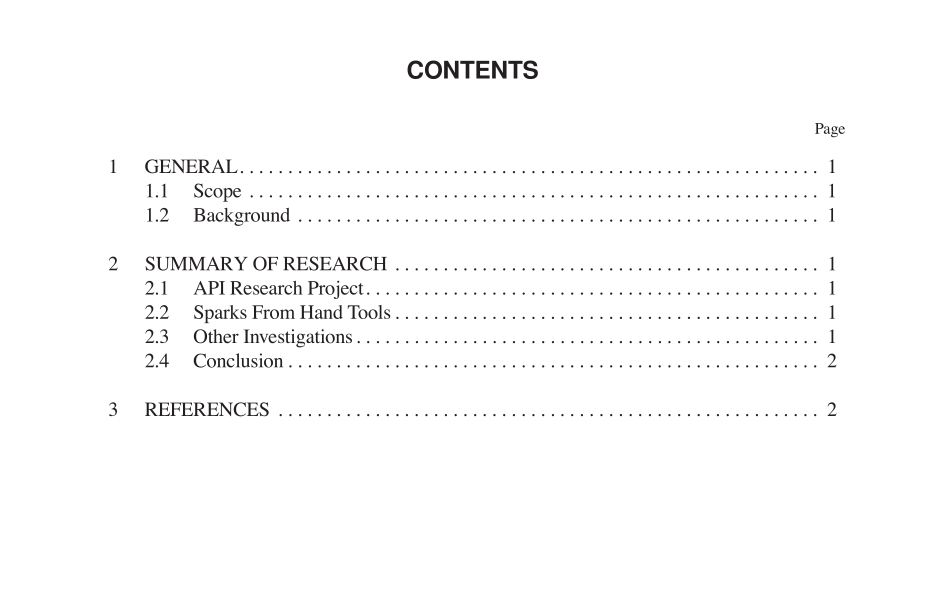API RP 2214 pdf download

API RP 2214 pdf download.Spark Ignition Properties of Hand Tools
1 General
1.1 SCOPE This publication emphasizes that the use of nonferrous hand tools, sometimes referred to as nonsparking tools, is not war- ranted as a Þre prevention measure in petroleum operations. 1.2 BACKGROUND As early as 1930, Þre protection engineers in the petroleum industry questioned the justiÞcation for recommending the use of special nonferrous tools instead of ordinary steel tools in petroleum operations. These engineers pointed out that although numerous opportunities existed for the production of sparks from violent contact of steel objects with other steel objects, there was a negligible record of Þres resulting from such a cause. It was therefore illogical to attribute a special hazard designation to steel hand tools. A paper presented at the Group Session on Fire Protection at the Annual Meeting of the American Petroleum Institute in 1941 described a series of tests conducted about 15 years ear- lier. The paper reported that sparks produced by contact of steel with steel, steel with an abrasive wheel, or even steel with power-driven equipment were unlikely to ignite petro- leum vapors. 1 The nature of sparks was discussed, and it was shown that any material harder than steel (even nonsparking material) could produce sparks upon striking steel. The authors concluded that insistence on the use of special non- sparking tools fostered a false sense of security to the detri- ment of other, more important Þre prevention measures. They also concluded that blanket rules covering the use of such tools were unwise and against the best interests of the petro- leum industry.
2 Summary Of Research
2.1 API RESEARCH PROJECT The use of nonsparking tools had not been universal in the petroleum industry before 1941, but after the presentation of the paper, many companies began to gradually eliminate the use of special tools. It was, however, thought desirable for additional research to be performed by an independent ser- vice. In 1950, API entered into a research contract with Underwriters Laboratories under the sponsorship of the API Committee on Accident Prevention and Fire Protection. During the next three years, little was accomplished other than the conÞrmation of previous conclusions. Tests showed that even with mechanical devices operating at high speeds and with high contact pressure, it was extremely difÞcult to produce sparks capable of igniting petroleum vapors. No method was developed by which to correlate the results of these tests with the properties of sparks produced in the ordi- nary use of hand tools. It became apparent that the original objectives of the program would probably not be attained. API therefore decided to terminate the contract. 2.2 SPARKS FROM HAND TOOLS The API Committee on Accident Prevention and Fire Pro- tection reviewed the situation and proposed the preparation of ÒSparks From Hand ToolsÓ 2 , which was approved for publi- cation by the Safety Committee of APIÕs Board of Directors on February 3, 1956. The conclusion of this publication read: Based on experimental evidence and ample practical expe- rience, it has been concluded that in petroleum operations no significant increase in fire safety will result from the use of nonsparking hand tools in lieu of ordinary tools made of steel. About a year later, the U.S. Department of Commerce, OfÞce of Technical Services, issued ÒSparking Characteris- tics and Safety Hazards of Metallic MaterialsÓ. 3 A review of the literature and some experimental work led to the follow- ing conclusion: No benefit is gained by the use of low sparking materials in place of steel in hand tools to prevent ignitions.









